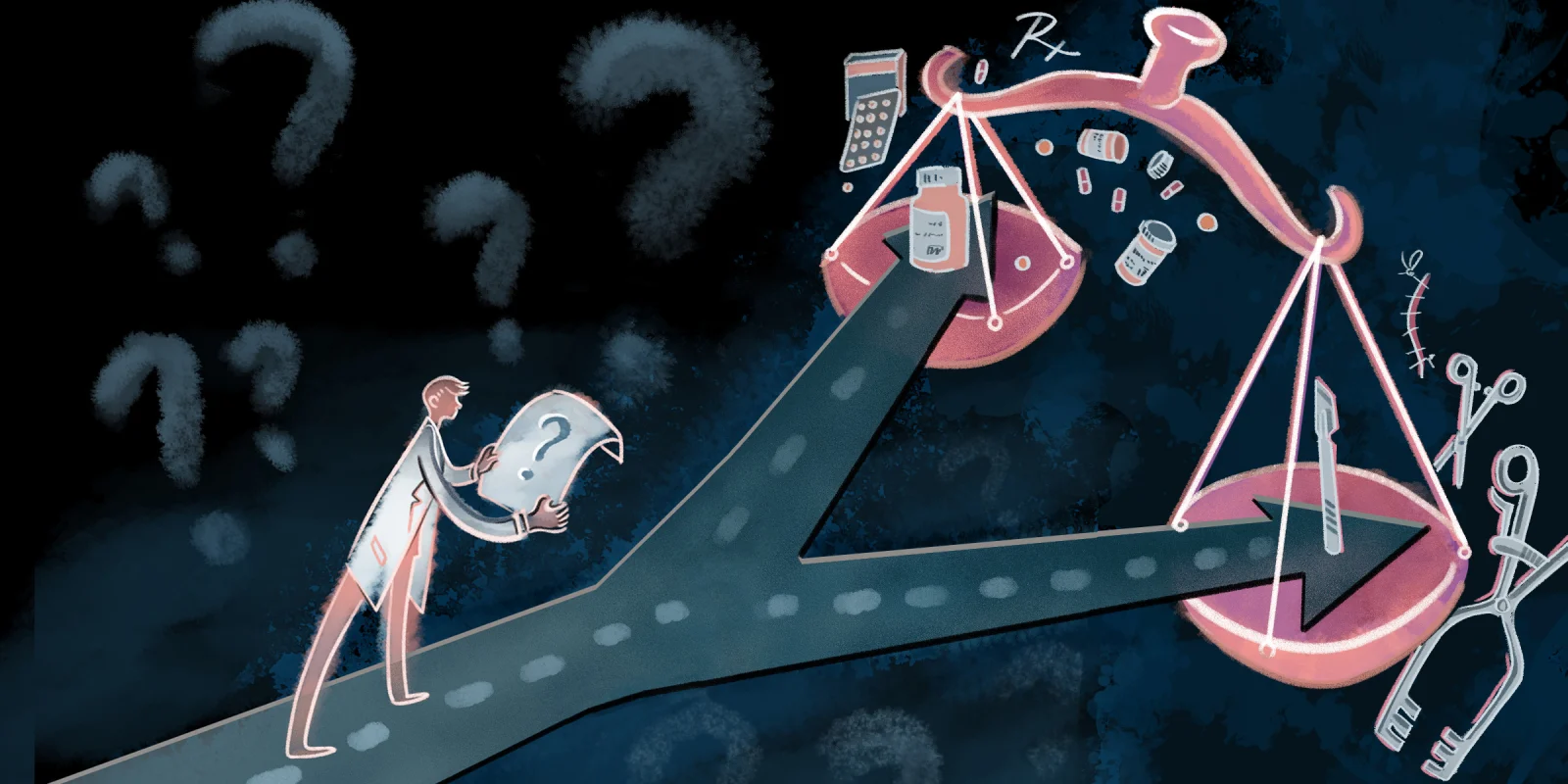What is the most difficult part of performing a cholecystectomy or performing a cesarean delivery? For the cholecystectomy, is it ensuring there are no retained stones in the common bile duct? Or is it, perhaps, avoiding a vascular injury with insertion of the trocar? For the cesarean delivery, is it controlling hemorrhage? Extracting the fetus in a timely manner? Or maybe avoiding injury to the maternal bladder?
If you’ve settled on one of the above answers, ask yourself if you’ve really chosen the best answer. Your selection isn’t necessarily wrong, but I’ve always felt the most difficult step in a cesarean delivery, or any surgical procedure, is making the decision to perform the surgery in the first place. Indeed, the making of a decision is one of the most fundamental skills one can acquire, and yet it is arguably the one skill universally taken for granted.
The first time I asked the question, during teaching rounds one morning to the assembled medical students and house officers, I wasn’t surprised by the responses. Over the years, I’ve only been offered the response I was hoping for two times — once by a medical student and the other time by a retired family practice friend who was kind enough to serve as a test subject when formulating the idea for this piece.
The decision-making process for every specialty is bedeviled by a set of unique challenges. In fact, these challenges are probably what shaped and drove our decision to pursue our respective career paths in the first place. These challenges are the morbidities and comorbidities carried by our patients. They function as the traffic signals that shape and develop our individual decision-making processes. Physicians, in training as well as in clinical practice, acquire their own approaches to decision-making much as they acquire their own individual bedside manner — yet we all know not everyone possesses an equally effective bedside manner. Likewise, not all decision-makers are equally adept in making decisions. And why is it that decision-making itself — the process preceding everything else — is so frequently overlooked? I suspect it is because there are no formal didactic lectures on the decision-making process available to clinicians. At least, I am not aware of any lectures on the topic in medical education curricula. By contrast, MBA programs regularly provide their degree-seeking candidates with courses devoted entirely to decision-making. MBA students at the University of Chicago Booth School of Business can enroll in two such courses, Managerial Decision Making and Managerial Decision Modeling. Further, in the field of psychology, extensive research has been conducted exclusively on the study of decision-making, suggesting its fundamental psychological importance.
Not only is there no formal training in decision-making in medicine, I believe the adoption and implementation of the EMR has impeded the development and cultivation of the skills required to make decisions. Medical students no longer have the access to patients’ charts they once had. The now archaic process of actually writing a progress note used to provide a crucial step in the cognitive development of a plan, acting as a necessary precursor to arriving at a decision. Without this seemingly mundane step, medical students forgo the opportunity to review all pertinent patient data and paraphrase the recommendations of previous consultants. In short, a strong foundation for reaching a conclusion (the decision) is now missing.
If the medical profession can learn — and patients can benefit from — the airline industry’s safety measures (e g., medicine has borrowed airlines’ timeouts for safety), surely we can learn from those MBA programs teaching decision-making skills.
Finally, I urge all those still in training to approach the decision-making process thoughtfully. You will come to realize that with confidence in decision-making, confidence in one’s skill set ensues.
And, until decision-making skill development is incorporated into medical school curricula, I urge those tasked with training burgeoning doctors to be cognizant of how important the decision-making process is to the development of one’s skills and confidence. Try to cultivate a consistent and effective teaching strategy to improve trainees’ decision-making processes. To paraphrase St. Francis of Assisi: Teach decision-making skills to medical students and residents. If necessary, use words.
Were you ever explicitly taught how to decide? How did you develop that skill set? Share your thoughts in the comments.
Lloyd Holm is a retired obstetrician who lives in Cottage Grove, MN with his wife Gretchen. He has authored two novels and a children’s book and his writings have appeared in the Omaha World Herald, The Female Patient, Iowa Medicine, Contemporary OB/GYN, Hospital Drive, the American Journal of Obstetrics and Gynecology, and Obstetrics and Gynecology. While a member of the teaching faculty at the University of Nebraska Medical Center in Omaha, he received the Dean's Award for Excellence in Clinical Education and The Hirschmann Golden Apple Award. Dr. Holm is a 2021–2022 Doximity Op-Med Fellow.
Illustration by April Brust







